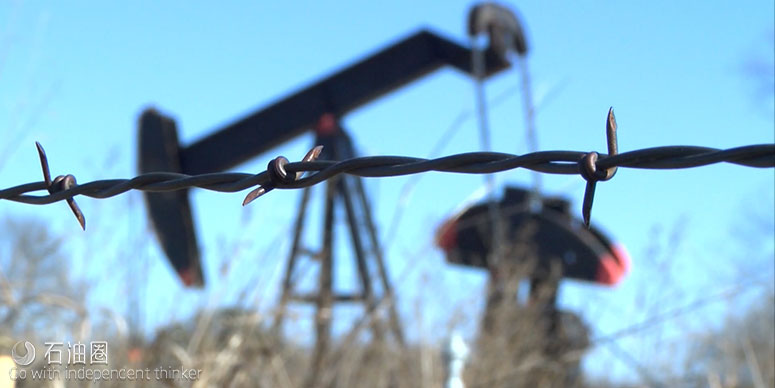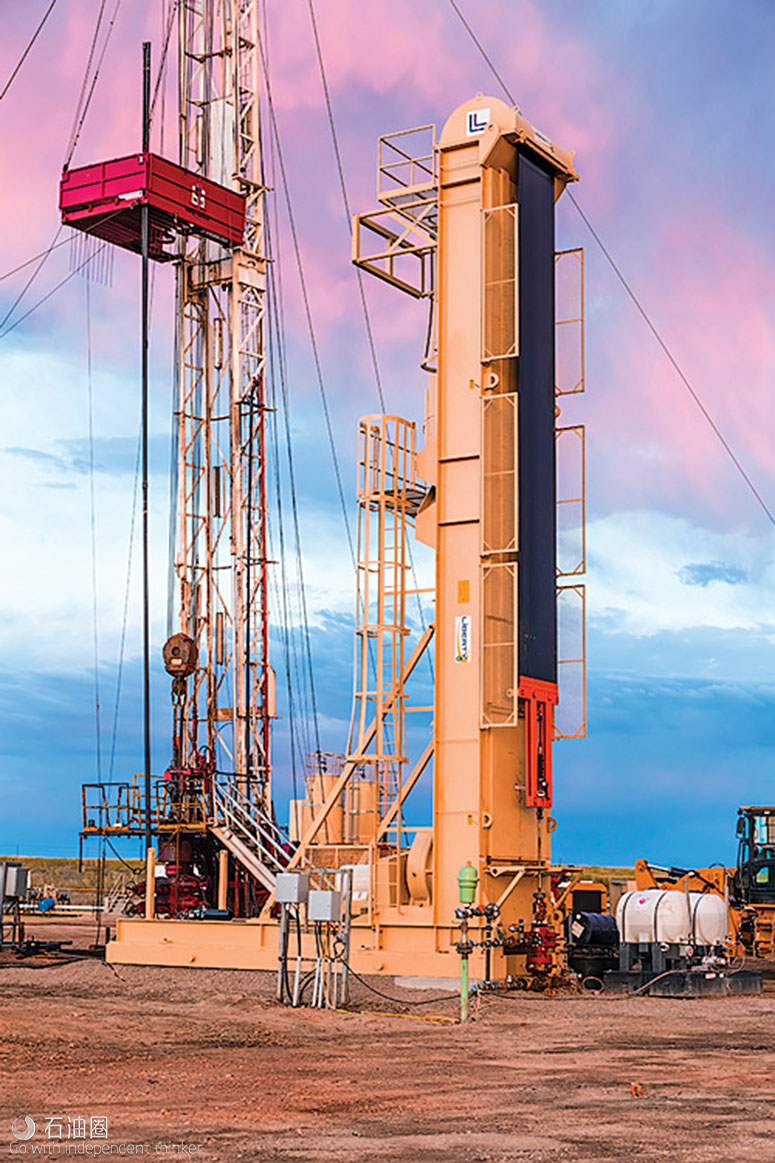LINEAR LIFT PUMP DEVELOPMENTS
Linear lift pumping units can provide a cost-efficient, compact, lighter-weight alternative to traditional beam pumping units in many multi-pad, horizontal well applications.
New 366-in. long stroke pumping unit with continued advancement in operation monitoring. Last year in this feature, we mentioned that Liberty Lift Solutions had introduced a long stroke pumping unit with a stroke length of 306-in., the Liberty XL (extra-long stroke).
This year, Liberty Lift added a 366-in. stroke length version to its XL Pumping Unit product line, Fig. 7. The new unit is comprised of a 320 gear reducer with a 50,000-lb structure rating. The XL 366 long stroke pumping unit delivers significantly fewer cycles, at slower speeds, with higher volumes than conventional and enhanced geometry pumping units. The unit comes standard with features including a wireless load cell, hydraulic rollback system, upper proximity switch, vibration detection device, wire mesh personnel guards, positive displacement inner-tower oiling system, and cutting edge Unit Sentry operation monitoring.
The Unit Sentry monitoring system comes standard with all XL units. It offers communication for over speed detection, vibration detection, load sharing with high and low load shut down, polished rod and chain position, RPC and VSD pause and fault notifications, customized metering for the inner-tower oiling system, customizable operator defined faults, and multiple restart options due to external power failure.
The XL 366 helps address and solve numerous issues and production goals in horizontal and vertical well applications. These issues typically include elimination or reduction of initial and mid-size ESPs, rod lifting in high deviations, higher volume initial rod lift, and overall reduction in time, opex and capex costs from the initial form of lift to the secondary form.
In many applications, this unit can eliminate the purchase or rental of an intermediate ESP as well as assist in transitioning from initial ESP to rod lift sooner in the well’s life cycle. Its 366-in. stroke helps operators achieve upwards of 700 to 900 bpd in pump depths of 6,000 ft to 7,500 ft, while still pumping at slower speeds. This range of production from an XL benefits operators who experience a high number of ESP failures that are causing both downtime and costly repairs.
The XL 366 also targets highly deviated applications where other forms of lift have become inefficient or conventional rod lift is not feasible without excessive down time due to rod and tubing issues. The reduction of pump cycles at slower speeds curtails workovers and rod/tubing issues on troublesome wells.
The long stroke unit also operates efficiently in vertical well applications where initial artificial lift production is in the 700 to 900 bpd range and rod lift is the most efficient and economical option. In these applications the rod lift infrastructure can be installed during the first stage, enabling operators to keep all downhole equipment consistent through subsequent artificial lift stages.
HYDRAULIC JET PUMP DEVELOPMENTS
Hydraulic jet pumps are often deployed in wells that are difficult to produce due to challenging well geometry, fluid composition and reservoir conditions. When compared to other types of pumps, jet pumps can pass through and can be set in tighter wellbore deviations due to their size.
Jet pumps utilize the Venturi principle, converting high pressure fluid to a low pressure high velocity stream, which draws in the formation fluid. The power fluid and formation fluid commingle inside the throat and move through a diffuser increasing the pressure for lift.
Focused production measurement system using a hydraulic jet pump. Production logs have been an industry standard for many years, but by themselves they are not always a reliable way to evaluate the complicated flow regimes in modern multi-stage wells. Production logs work well at determining the phases of flow in horizontal or vertical wells, but in multi-stage wells determining from which stage or cluster the production is originating is more of a challenge.
The focused production measurement system from Tech-Flo measures fluid entry and the phases of flow while the system is in the hole, Fig. 8. It uses the flexibility of a hydraulic jet pump to produce and stabilize the well while each zone or stage is isolated between straddle packers. It is movable and resettable.
The system increases and measures a flowing well’s production, produces and measures a dead well’s production, and can produce a zone or stage’s absolute open hole potential. It measures three-phase flow, temperature, static bottomhole pressure and flowing bottomhole pressure to determine a well’s in-flow performance. It can be run in real time or memory mode.
Conveyance methods include jointed pipe, coiled tubing or fiber coiled tubing. Suggested uses of this system include post-fracturing evaluation, pre-refracturing evaluation, and evaluation of vertical wells with stacked pay.

 石油圈
石油圈


